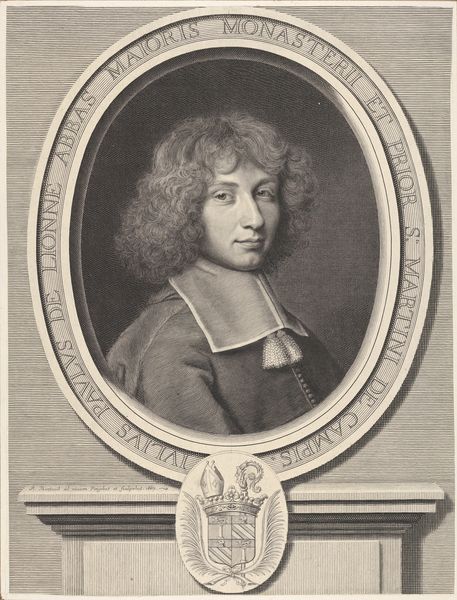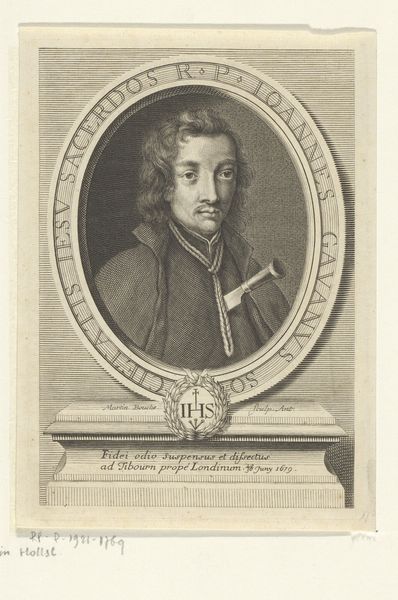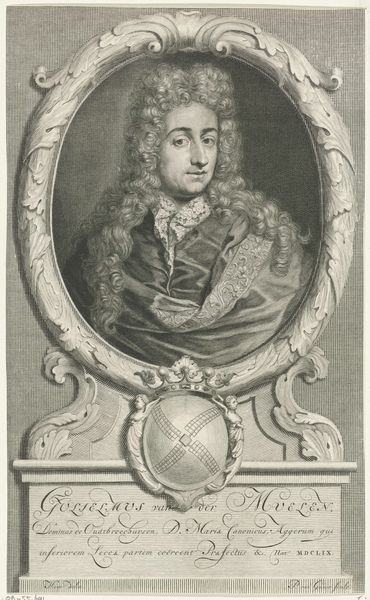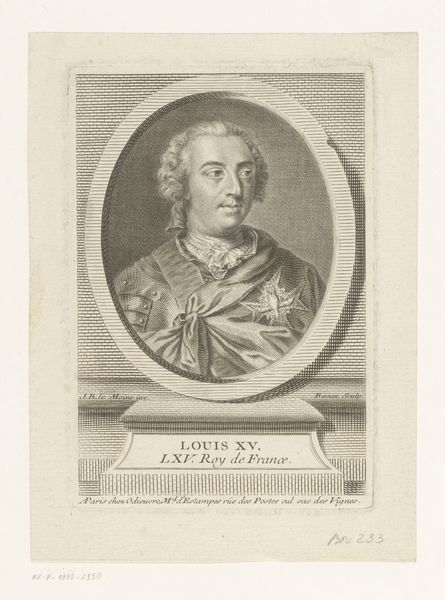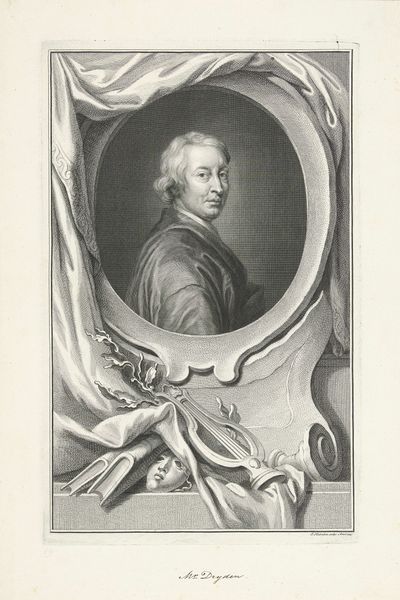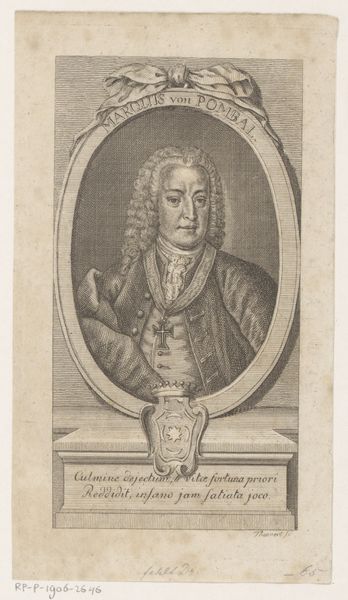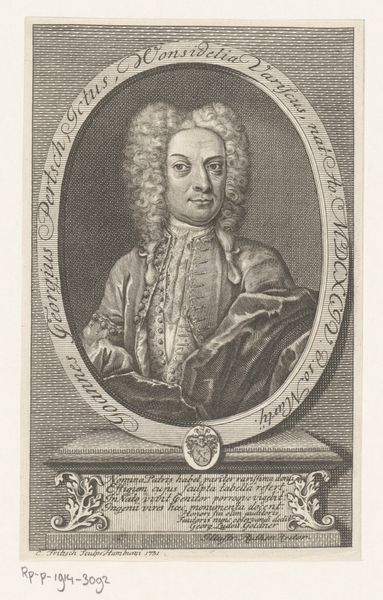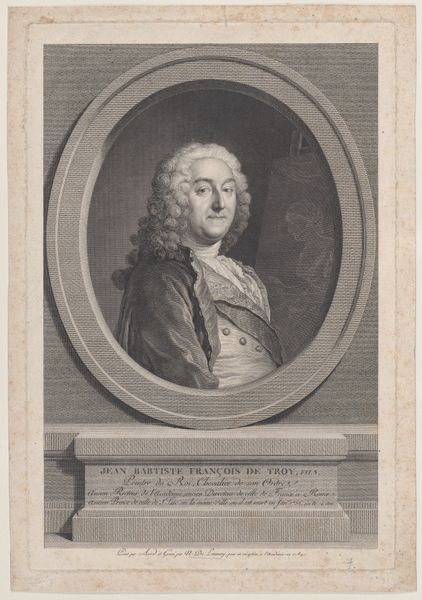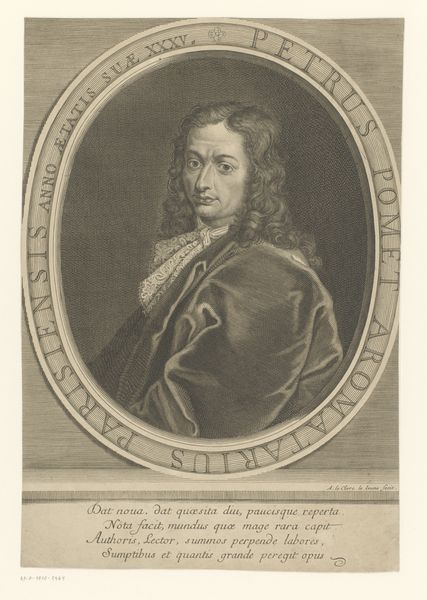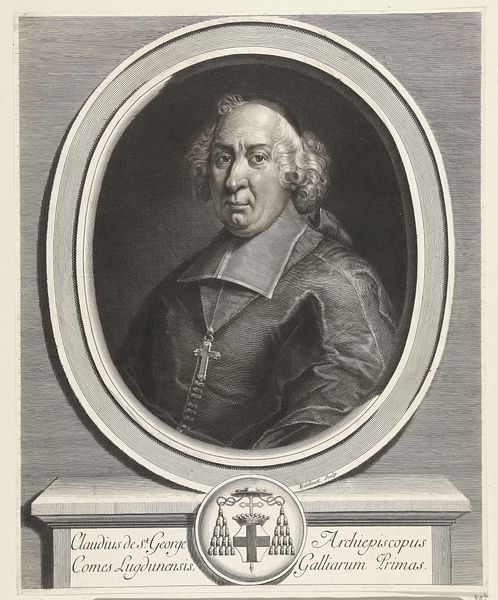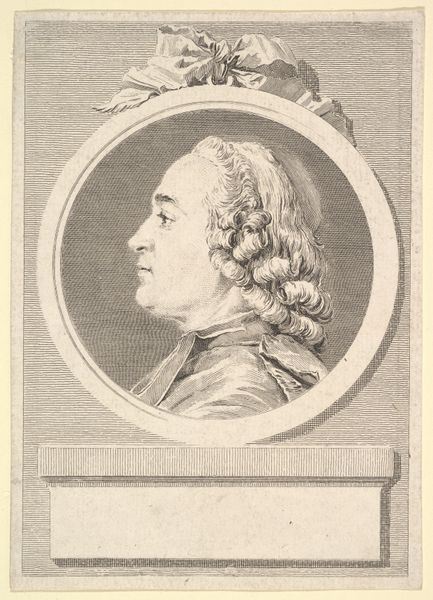
Portrait of Charles d'Orleans, Abbe of Rothelin 1744 - 1749
0:00
0:00
drawing, print, etching, engraving
#
portrait
#
drawing
#
baroque
# print
#
etching
#
figuration
#
portrait reference
#
history-painting
#
academic-art
#
engraving
Dimensions: Sheet (Trimmed): 5 13/16 × 4 1/8 in. (14.8 × 10.5 cm)
Copyright: Public Domain
Editor: This is Nicolas Henry Tardieu's "Portrait of Charles d'Orleans, Abbe of Rothelin," dating from the mid-18th century. It's an engraving, so the range of tones is pretty narrow. What strikes me is the elaborate frame around the central figure; how should we interpret this compositional device? Curator: The formal arrangement here serves to elevate the sitter through visual containment. Note how the curves of the frame echo and amplify the sitter’s rounded features. The ornate detail and curvilinear structure present a distinct separation between the figure and the space outside the frame, thereby reinforcing his presence within this constructed world. What does this intentional manipulation of form and space communicate? Editor: So, the artist is using the frame to emphasize Charles d’Orleans' importance by setting him apart visually? The way the lines draw your eye to the center. Curator: Precisely. Consider also the vase at the frame’s base; the vase seems to emphasize this constructed presentation through a subtle but effective contrast to the face. The vase emphasizes stillness, which reflects back on d'Orleans. His character has become, quite literally, still life. Editor: That’s interesting, because I didn’t immediately consider the vase as an element of this artistic construct, more as decorative filler than anything. Now I understand it adds more of a story by working together with the frame. Curator: Indeed. What this reveals, then, is the work's function, isn't it? Which is not just to represent the Abbe of Rothelin, but to demonstrate the relationship between presentation, identity, and power. Editor: Thank you. Now, looking again at the lines, curves, and the framing device, it is amazing how much those formal qualities really do enhance that sense of powerful, but also curated, stillness.
Comments
No comments
Be the first to comment and join the conversation on the ultimate creative platform.

